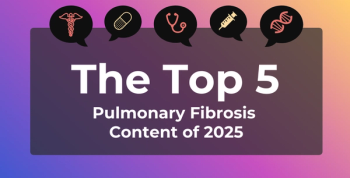
Can Healthcare Quality Measures Benefit Patient Health?
When effectively integrated into healthcare systems, well-vetted and scientifically backed healthcare quality measures can have significant impacts on patient health, stressed Shantanu Agrawal, MD, president and CEO of the National Quality Forum, at the New Jersey Health Care Quality Institute’s Quality Breakfast on February 6.
When effectively integrated into healthcare systems, well-vetted and scientifically backed healthcare quality measures can have significant effects on patient health, stressed Shantanu Agrawal, MD, president and chief executive officer of the
The NQF is a nonprofit organization
“Our mission is really to focus on being the trusted voice driving measurable health improvements throughout the country…We want quality measures to better align with the clinical workflow and be much more cohesive,” said Agrawal, who is the former deputy administrator for CMS and director of the Center for Program Integrity.
The forum itself does not develop or implement measures, but rather endorses those that meet its standards. “What we do is we help to identify the scientifically most rigorous and supported measures. You can almost think of us as a measure certifier,” said Agrawal.
Endorsed measures, all of which are funded by the
Multistakeholder committees, organized by clinical topic areas, certify quality measures. These endorsed measures can impact processes, outcomes, structures, costs, and resources in the healthcare industry.
When implementing NQF-endorsed measurements, providers can be secure in knowing each measure is reliable and backed by a pre-evaluated data model, Agrawal notes. Perhaps even more important is the fact there is consensus on the measure.
The main impetus driving the forum is the inefficiency of status quo operations in the healthcare industry. “Right now, it is a sad state of affairs that we spend hours, upon hours, upon hours of labor time, of clinician time, collecting quality data rather than acting on results. It makes the whole enterprise look nonconstructive to clinicians and patients. We want that time spent on actual improvement,” Agrawal said.
For example, last year the forum used its vetting process of multistakeholder committees and scientific grounds to evaluate CMS’ hospital star rating program to see how it would fare. According to Agrawal, “It was not clear to us what the intent and goals of the hospital star rating program really is.”
He pointed out that it is possible to be a highly rated hospital in the program and not even report on safety measures, let alone receive high ratings for safety measures. “That’s a pure outcome of methodology…The concern is you are looking at a 4- or 5-star hospital and presuming that certain things are good that just are not supported,” he said. “You should not think that those stars are necessarily assessing safety. You just cannot make that assumption; we know that now from a deep dive in the methodology.”
Agrawal recommends CMS clarify its intents and goals with the program, be transparent about what exactly they are and are not conveying, and present data in a way that is manageable and useful to consumers and providers.
Another facet of the NQF is the Core Quality Measures Collaborative, which aims to create standardized measure sets that can be utilized across public and private sectors.
“We all know the level of misalignment and fragmentation that’s sidelining measures around the country,” Agrawal said. “There’s basic and concerning issues like the presence of 45 tobacco-cessation counseling measures across the nation. That is not ideal, we all know that. But in order for us all to get down to one or even a few, you’ve got to deal with some really basic methodological issues, data source issues, and specification issues.”
Implementing measure alignment and harmonization, along with facilitating easier collection of measurement data, serve as potential ways to overcome these challenges.
“When you spend 99% of the time getting the data, it becomes really problematic…My concern is that this effort undercuts the notion of the enterprise and makes people jaded about the enterprise, when, in fact, quality improvement needs to be at the core of healthcare,” Agrawal said.
Integral to the NQF’s mission is supporting the transition to a value-based environment. To do so, the forum focuses on national priorities such as opioid stewardship and aims to improve population health through the lens of health equity. Although overall improvements in quality of care have been achieved since 1999, health equity and disparities continue to hinder widespread efforts.
One method to meet these challenges is to enable data integration, so health systems can better identify at-risk populations. This may include looking outside of the healthcare environment for data, Agrawal said. Recently,
Outside of the federal government, individual organizations like
Last year, 100% of New Jersey's hospitals responded to the Leapfrog Safety Survey. “We are the only state in the country that has more than 50 hospitals that has 100% of their hospitals reporting,” said Linda Schwimmer, JD, president and CEO of the NJHCQI.
Riverview Medical Center and Robert Wood Johnson University Hospital Hamilton were designated Top General Hospitals, a designation that is awarded to less than 6% of all eligible facilities.
Newsletter
Stay ahead of policy, cost, and value—subscribe to AJMC for expert insights at the intersection of clinical care and health economics.







































